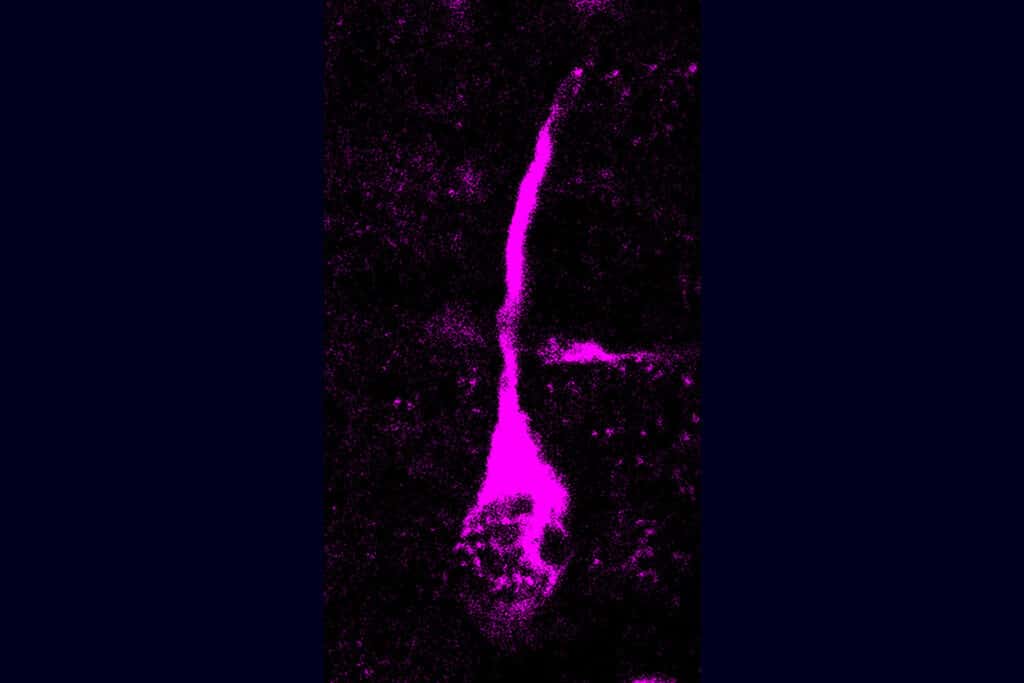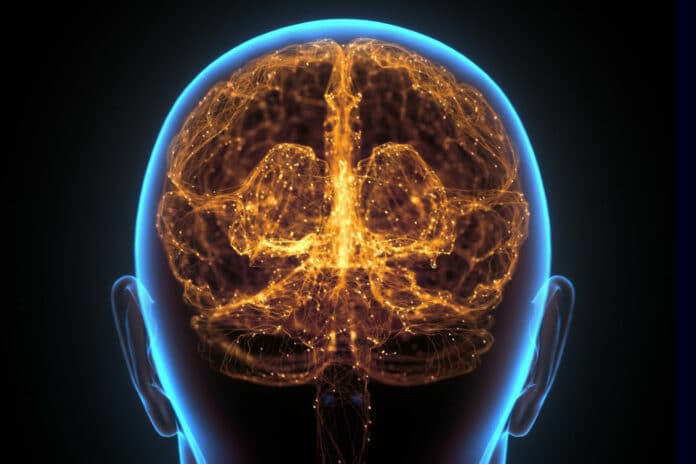What makes modern humans unique? Comparisons with our closest relatives, the Neandertals, hence give fascinating insights. One of the main explanations for the evolution of human cognition is thought to have been the increase in brain size and neuron production throughout brain development.
Neanderthal brains were similar in size to modern humans but differed in shape. What we cannot tell from fossils is how Neanderthal brains might have differed in function or organization of brain layers, such as the neocortex.
Scientists from Max Planck Institute of Molecular Cell Biology and Genetics (MPI-CBG) in Dresden have now analyzed the effect of a single amino acid change in the transketolase-like 1 (TKTL1) protein on the production of basal radial glia, the workhorses that generate much of the neocortex. They found that the modern human variant of the protein TKTL1, which differs by only a single amino acid from the Neandertal variant, increases one type of brain progenitor cells, called basal radial glia, in the modern human brain.
The bulk of the neurons in the growing neocortex, an area of the brain essential for many cognitive functions, are produced by basal radial glial cells. Scientists conclude that this single human-specific amino acid substitution in TKTL1 underlies a higher neuron production in the developing frontal lobe of the neocortex in modern humans than in Neandertals because TKTL1 activity is particularly high in the frontal lobe of the foetal human brain.

The latest study of the research group of Wieland Huttner, one of the founding directors of the Max Planck Institute of Molecular Cell Biology and Genetics (MPI-CBG) in Dresden, was carried out in collaboration with Svante Pääbo, director at the Max Planck Institute for Evolutionary Anthropology in Leipzig, and Pauline Wimberger of the University Hospital Dresden and their colleagues.
Scientists mainly focused on: the protein transketolase-like 1 (TKTL1). In modern humans, TKTL1 contains an arginine at the sequence position in question, whereas Neandertal TKTL1 contains the related amino acid lysine. In the fetal human neocortex, TKTL1 is found in neocortical progenitor cells, the cells from which all cortical neurons derive. Notably, the level of TKTL1 is highest in the progenitor cells of the frontal lobe.
Scientists explored the significance of this one amino acid change for neocortex development. They introduced either the modern human or the Neandertal variant of TKTL1 into the neocortex of mouse embryos.
They observed that basal radial glial cells, the type of neocortical progenitors thought to be the driving force for a bigger brain, increased with the modern human variant of TKTL1 but not with the Neandertal variant. Consequently, the brains of mouse embryos with the modern human TKTL1 contained more neurons.
The researchers next looked at how significant these effects were for the growth of the human brain. To achieve this, they used human brain organoids—miniature organ-like structures that can be grown from human stem cells in cell culture dishes in the lab and that mimic aspects of early human brain development—to swap out the arginine in modern human TKTL1 for the lysine characteristic of Neandertal TKTL1.
Anneline Pinson said, “We found that with the Neandertal-type of amino acid in TKTL1, fewer basal radial glial cells were produced than with the modern human-type and, as a consequence, also fewer neurons. This shows us that even though we do not know how many neurons the Neandertal brain had, we can assume that modern humans have more neurons in the brain’s frontal lobe, where TKTL1 activity is highest than Neandertals.”
Scientists also found that modern human TKTL1 acts through metabolism changes, specifically stimulating the pentose phosphate pathway followed by increased fatty acid synthesis. In this way, modern human TKTL1 is thought to increase the synthesis of specific membrane lipids needed to generate the long process of basal radial glial cells that stimulates their proliferation and, therefore, increases neuron production.
Wieland Huttner, who supervised the study, said, “This study implies that the production of neurons in the neocortex during fetal development is greater in modern humans than it was in Neandertals, in particular in the frontal lobe. It is tempting to speculate that this promoted modern human cognitive abilities associated with the frontal lobe.”
Journal Reference:
- Anneline Pinson, Lei Xing, Takashi Namba, Nereo Kalebic, Jula Peters, et al. Human TKTL1 implies greater neurogenesis in frontal neocortex of modern humans than Neandertals”, Science. 09. September 2022 DOI: 10.1126/science.abl6422
